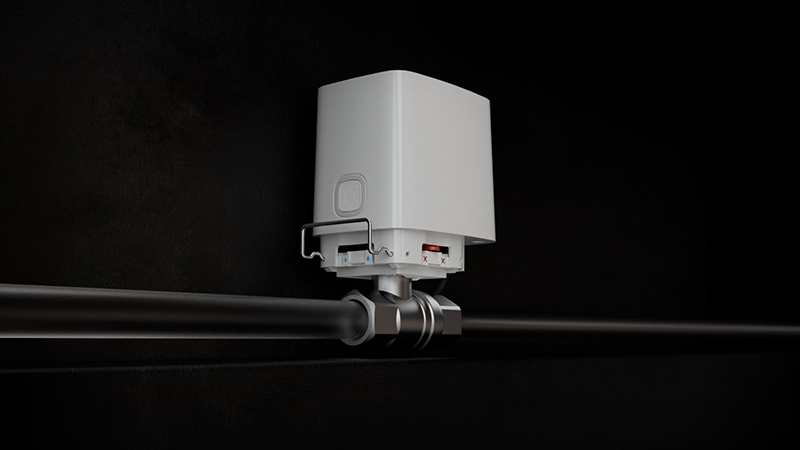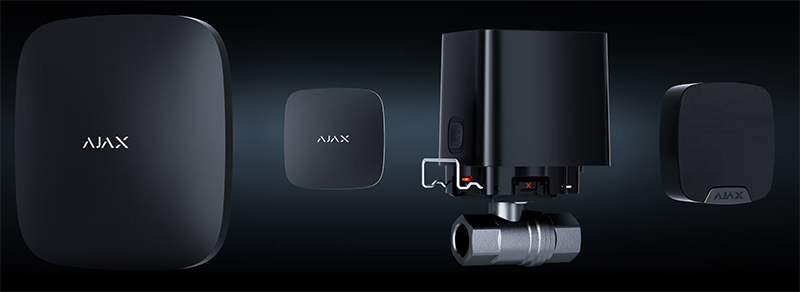
WaterStop
Frequent, destructive and expensive. These three characteristics describe floods and leaks, regardless of how massive they are. How can installers help reduce the impact of water damage?
Leaks and floods happen more often than fires or burglaries and are number one in the ranking of everyday disasters. According to statistics, in one district (of 333 private houses) there are 1 fire, 9 burglaries and 27 plumbing leaks that happen per year. In Spanish homes, a leak occurs every 13 seconds. They cause damage so serious that they are evaluated by the international Institute of Inspection Cleaning and Restoration Certification, IICRC.
Scientifically speaking, there are four degrees of water damage. The gradation depends on the porosity of the materials and their ability to absorb the water.
In simple words, the mold grows even if water–damaged areas are dried within 48 hours. The musty smell may never disappear. The wooden floor rots, the drywall gets soaked and crumbled. Appliances deteriorate. Electrical wiring becomes dangerous because a short circuit can cause a fire.
They also cost a lot of money. $13 billion, £707 million or €275 million is the annual cost of water damage in the US, UK and Spain, respectively. Countries and currencies can change, but the financial losses remain tremendous.
There are domestic floods and floods caused by natural disasters. Natural phenomena are not in the focus of this article, but they can be taken into account in the national statistics.
In addition to global damage, the leaks can be “slow”. They cannot be detected immediately, and they also lead to costs. A leaky tap that leaks at the rate of one drop per second leads to the loss of more than 11 thousand litres of water per year (3000 US gallons). That’s the amount of water needed to take more than 180 showers. A 3mm crack in a pipe can result in 945 litres of water leak per day (or 250 US gallons).
One has to keep in mind that plumbing has a service life and requires systematic preventive maintenance. For example, descaling of the boiler should be carried out at least once a year, and the water supply hoses of the washing machine should be replaced after an average of 8–9 years.
Regular inspection is necessary, but it does not guarantee against sudden failures. In apartment buildings, the human factor (for example, a forgetful neighbour) can cause a problem.

How to keep risk areas under control
Wireless leak detector LeaksProtect from Ajax does not require installation, remains maintenance-free for years and operates 24/7. The device is 14 mm high so easily fits in a place with the risk of flooding, for example, under a washing machine or sink.
The electric actuator WaterStop can be installed both on a bundled Bonomi Industries valve and a third-party valve. It is compatible with valves complying with ISO 5211 standard. Therefore, a plumber can install a ball valve one day, and an installer can fix an electric actuator and connect the device to the Ajax system another day.
In case of a washing machine leak or a pipe burst, WaterStop will shut off the water supply by LeaksProtectalarm, and Ajax apps will instantly notify about the accident. With the help of Relay or WallSwitch automation devices, third-party electric water shutoff valves can also be integrated into the Ajax system.
Up to 200 devices can be connected to the Ajax hub. LeaksProtect detects leaks, and through scenarios can automatically control multiple WaterStop shutoff valves, stopping the water supply to the house, floor, or even to a certain room by the signal of the detector — it all depends on the specific tasks. WaterStop consists of an electric actuator, a shutoff valve, and a mount connecting them. The shutoff valve can be selected to your requirements without any restrictions: it is available in three sizes — ½, ¾ or 1″. The water supply can also be controlled remotely in the Ajax apps and manually with a button or lever on the enclosure. Other manufacturers’ systems offer five times less number of supported detectors and zero maneuverability in control.
Most water leak detection systems are powered by electricity and in case of its absence do not last more than 1–2 days. The Ajax water leak detection system is autonomous: LeaksProtect operates from a pre-installed battery for up to 5 years, and WaterStop — up to 3 years with the option to connect an external 9–12 V⎓ power supply: in this case, the pre-installed batteries of WaterStop would act as a backup power source. The hub can also be connected to a portable battery with the help of power supply units 6V PSU. Thus, the system provides security at facilities with low-voltage or unstable power supply.

